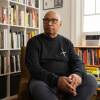This week, GBH’s Executive Arts Editor Jared Bowen recommends visiting two museums to see an epic collection of 16th-century masterpieces, and an exhibit of ceramics telling an intimate personal story.
“Titian: Women, Myth & Power” on display at the Isabella Stewart Gardner Museum until Jan. 2, 2022

Titian’s six masterpieces will be together for the first time in four centuries starting this month at Boston’s Isabella Stewart Gardner Museum. Described by Bowen as “epic, epic, epic,” the six paintings were commissioned by soon-to-be King Phillip II of Spain in the 16th century. The king gave Titian, the celebrity painter of his time, free reign to create anything he wanted. One of the six was already owned by Isabella Stewart Gardner herself — when she bought the masterpiece 125 years ago, it was the highest price paid for a painting in the United States at the time. Now, all six are reunited in Boston.
Bowen says the difficult subject matter, looking at Europe’s founding myths, requires “slow looking” to take it all in. “They’re gorgeous, but they’re jam-packed with imagery here,” he says. “So you can almost feel like you’re stepping into these worlds.”
“Titian calls these paintings the ‘poesie.’ And the word literally translates as painted poetries,” curator Nathaniel Silver said. “You could say that he's challenging the written word with the painted image. He's challenging the pen with the brush.”
“Roberto Lugo: Te traigo mi le lo lai – I bring you my joy,” on display at the Currier Museum through Sept. 26

Roberto Lugo is a ceramicist who grew up in Philadelphia. It wasn’t until he left for art school that he found an outlet to tell his own story. In this exhibit at the Currier Museum in Manchester, N.H., Lugo celebrates his family and community in urns, tea setting, plates, cups and saucers with inspiration from urban graffiti. “He upends this tradition of porcelain,” Bowen says.
“I have images of protests, of historical figures like Angela Davis... and people that have really inspired me to make me who I am. And I couldn’t be that without those people,” Lugo told Bowen. “So it is, in a way, a self-portrait. But it’s sort of this idea that I’m the village potter. But even [if you] have a village potter, you need a village.”




